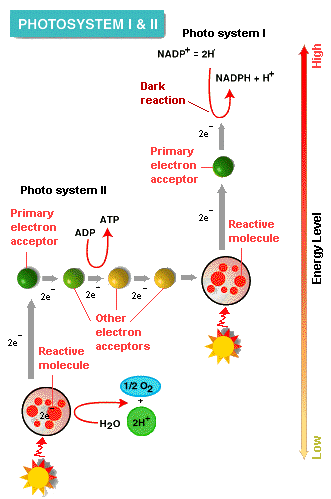How light reaction effects Cell Metabolism ?
Light reactions : The light reactions are carried out by two separate assemblies of several hundred chlorophyll molecules, accessory pigments, and associated electron carrier molecules. These groups of molecules are separated into two systems: photosystem I and photosystem II. During light reactions, there are two possible routes for electron flow, cyclic and noncyclic.

Cyclic Electron Flow : In cyclic electron flow, chlorophyll molecules from Photosystem I absorb photons from sunlight. The energy is transferred to electrons at a reaction center within the photosystem. Some electrons enter an excited state, enabling them to combine with other molecules by reducing them. The electrons are passed from molecule to molecule in an electron transport chain. The energy released at each stage is used to pump hydrogen ions across the thylakoid membrane. This potential energy is converted into ATP through a process called photophosphorylation, similar to the chemiosmotic phosphorylation that occurs in cellular respiration. The electrons eventually return to their resting state, and are recycled into the photosystem.
Non-Cyclic Electron Flow : If the second set of photosynthetic processes, the Calvin cycle, is occurring, photosystem II cooperates with photosystem I in noncyclic electron flow to produce NADP+ + H+ in addition to ATP. High energy electrons from photosystem I are not recycled, but stored by the carrier molecules NADP, which become NADP+ + H+, and are used in the Calvin Cycle. Photosystem II replaces the electrons that are lost from Photosystem I through the Hill Reaction. The Hill Reaction breaks water (H2O) down into hydrogen ions (2H+) and oxygen gas ( O2) by removing electrons. Hydrogen ions (H+) accumulate within the lumen of the thylakoid, fueling the proton pump powering chemiosmosis, and oxygen atoms combine to form O2, which escapes into the atmosphere. The extracted electrons are then sent to Photosystem I. Non-cyclic electron flow thus produces ATP, NADP+ + H+ for the Calvin Cycle, and oxygen.